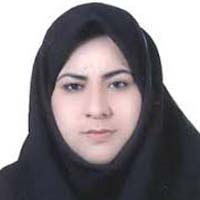The study of Gully Erosion in Dyereh Catchment Using the Method of Weightal Modulation and Stream Power Index
The existence of technical &theoretical knowledge for the assessment of gullies helps to the distinction of gully locales on topographical map& their digital model. Anyhow, the ability to use of topographical map (DEM) for the assessment of gullies situation needs to the necessary knowledge about the process of gully formation and the frequency of gullies. The present research has been carried out for the assessment of locales prone to gully formation in Dyereh.The substances& methods used in this research consist of the layers of DEM model& the secondary layers extracted from it, stream power index, land use, canals, lithology & the ways existent in the catchment& the collection of circular data. The above data has been analyzed in Arc GIS environment and its results have been scrutinized with chi-square test.According to the acquired results of this research in Dyereh catchment 5 factors (inclination, inclination’s horizontal curvature, land use, distance of the road, and lithology) among 8 factors have been recognized as the main factors in gully formation. Among these 5 factors the class of inclination 0-4/1 in which 33/22% of Dyereh from its total area has been located, has the most effect on the gully formation in this catchment.
-
Modelling Land-use Changes using MDC, MD and ML Algorithms (Case Study: Midawood-Dalon Watershed)
*, Heeva Elmizadeh, Mahshid Moavi
Arid regions Geographic Studies, -
Prediction of Gully Erosion and identifying factors affecting it using the Maximum Entropy Model and BCC-CSM2-MR climate change models for the years 2020-2040 (case study: Alamarvdasht watershed)
Shima Vosoghi, Reza Zakerinejad *,
Journal of Geography and Planning,


